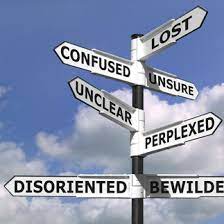We know that we are supposed to create value with our customers through their buying process. But as I talk to sales people, most struggle with what that actually means.
Sadly, too many sales people scratch their heads, saying, “Our product is cheaper than the alternatives…….”
For those, more knowledgeable, most answers revolve around presenting the capabilities of a product/services and the value the customer will realize. They express value in terms of savings, cost reduction, improved profitability, and sometimes revenue growth.
This is important, but it’s only realized after the customer has made a decision and implemented a solution. And when one thinks about it, the differences between what our solution delivers versus our competitors, is probably pretty small (which then leads to the discounting discussion). So it’s tough to create differentiated value with just this.
The greatest and most differentiated value we create is how we help the customer through their change, problem solving, and buying process. This is where the majority of buying efforts fail, as a result the customer never realizes the outcomes they expected in initiating the effort.
Unfortunately, sellers aren’t very helpful in this critical stage of the buying process. They don’t help the customer with the issues most critical in their buying process, making a decision, and moving forward.
The issue is, sellers tend to think of this process as selecting a vendor or solution. As a result, the focus is on demonstrating their solution is superior to the alternatives.
But in reality, the customer is considering a change–addressing a problem, a new opportunity, trying to improve their ability to perform. This change includes consideration of a purchase, but that’s just a small part of what they must consider in achieving a successful outcome. Solution selection is not where customers struggle the most.
It’s all the other stuff that surrounds a change effort the customers struggle with. The issue of why change is critical. Beyond this, what is the customer trying to achieve with the change, what are the consequences of doing nothing, what are the consequences of failure? Who needs to be involved, how do they agree on the key issues they are trying to address, what questions should they be asking themselves, what’s the project plan, how do they maintain consensus through the project, and so forth. How do they make sense of all the information, data, alternatives they are considering?
Then there are the factors around indecision? What happens if they make a wrong choice–not just in solution selection, but are they doing the right things for the organization? What happens if they fail? How do they get buy-in from the rest of the organization?
I could go on, you know all the issues they go through in making a decision in which the entire team is confident.
The issue, from a seller point of view is, how do we help them through this process? How do we help them understand these issues, gain agreement and move forward?
It’s helping the customer with these issues that creates the most differentiated and sustainable value in their change management process. If we shift our focus from demonstrating the superiority of our solution, to helping them successfully navigate their change management process, we create value that helps them achieve their goals.
By doing this, we set ourselves apart, we also reduce the number of initiatives that end in no decision made. Think of what it means, to the customer and you, to chip away and capture some percentage of the 60% of initiatives that end in failure.
Differentiated value creation is all about working with the customer, helping them achieve their goals–both in making a decision and realizing the improvements they anticipated in initiating the project. Are you leveraging every opportunity you can to create value with the customer?

Dave I mostly agree, but I would just go a step further. You say that value creation is helping them achieve their goals and realizing the improvements they anticipated. I think that’s actually value delivery.
Value creation is working with the customer is working collaboratively to go beyond their goals and expectations, thus delivering more value than they knew was possible.
In fact, since it’s collaborative, I would say that in true value creation, both sides end up being happily surprised by the results.
Although it’s not a “sales” example, I would cite the recent news about how the Ukrainian armed forces are taking delivery of Western weapons and using them creatively in ways to get results neither side knew was possible.
Jack, really great observation. I was trying to communicate this idea, but in my haste, wasn’t very effective. Thanks for making the correction!